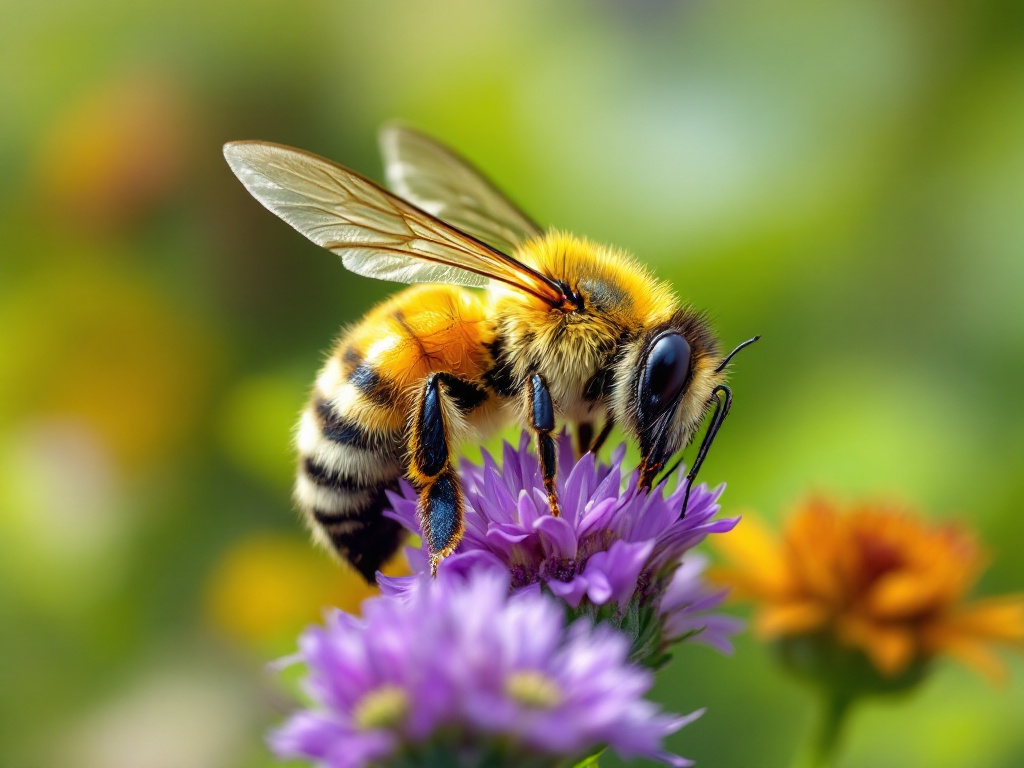Image generated by flux-ai.io & content generated by ChatGPT Version 4o-mini
Protecting Our Pollinators: A Guide to Smart Pest Management in Bradford County
Residents of Bradford County, Florida, love their gardens. Whether it’s vibrant flower beds or lush vegetable patches, many of us take pride in our outdoor spaces. However, as we cultivate these beautiful gardens, we might unintentionally harm the very insects that help them thrive. A recent study sheds light on how we can manage pests while protecting our essential pollinators like bees and butterflies.
Understanding the Problem
Insects are crucial for our environment. They pollinate plants, break down waste, and are a food source for other wildlife. However, many gardeners face pest problems that can threaten their plants. Pests like aphids and caterpillars can damage flowers and crops, prompting the use of insecticides. These chemicals can be effective but often harm beneficial insects as well.
Imagine you’re trying to keep your tomatoes safe from aphids, but in doing so, you also eliminate the butterflies that pollinate your plants. This conflict is a growing concern among gardeners and experts alike.
What’s in the Toolbox?
The research categorizes insecticides into three main types:
-
Conventional Insecticides: These are synthetic chemicals that target a wide range of pests but can also harm beneficial insects. It’s important to avoid using broad-spectrum insecticides as they negatively impact our pollinators.
-
Biological Insecticides: These use natural organisms or substances to fight pests. They tend to be safer for beneficial insects.
-
Minimum Risk Insecticides: These are made from natural ingredients and are less harmful to the environment.
For Bradford residents, choosing the right type of pesticide is crucial. Instead of reaching for the conventional options, consider using biological or minimum risk insecticides, which can protect your plants without harming our pollinators.
Practical Tips for Bradford Gardens
-
Plant Diversity is Key: Just like our local farms thrive on a mix of crops, your garden can benefit from a variety of plants. This attracts a range of beneficial insects that can naturally control pest populations.
-
Observe Before Acting: Not all pest damage is harmful. Sometimes, it might just be aesthetic—like chewed leaves. Before spraying chemicals, assess whether the pests are truly threatening your plants’ health. Remember, plants with minor cosmetic damage don’t necessarily need to be treated.
-
Integrated Pest Management (IPM): This approach combines various strategies. Start by monitoring your plants regularly for pests and only use insecticides when absolutely necessary. When you do, opt for those labeled as low impact. Spot-treating is also encouraged instead of broad applications.
-
Consult Local Experts: Bradford County has resources like the local Cooperative Extension Service and master gardener programs. These experts can provide guidance on pest management that is safe for both your garden and the ecosystem.
Why It Matters
By adopting thoughtful pest management practices, Bradford residents can create gardens that not only flourish but also support local biodiversity. As our community continues to grow, protecting our pollinators becomes even more important. They ensure that our crops and gardens yield the fruits and vegetables we enjoy at local markets and on our dinner tables.
In summary, balancing pest management and insect conservation is a challenge, but it’s one we can tackle together. With some simple changes, we can keep our gardens healthy while supporting the vital insects that help them thrive. Let’s work towards gardens that are not only beautiful but also environmentally friendly—a win-win for Bradford County!
References
ENY2120/IN1444: Balancing Pest Management and Insect Conservation on Ornamental Plants. (n.d.). Ask IFAS – Powered by EDIS. https://edis.ifas.ufl.edu/publication/IN1444

